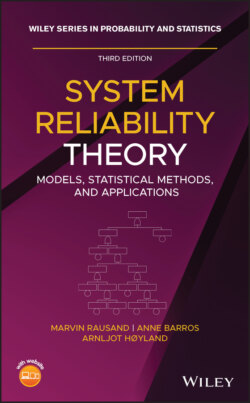Читать книгу System Reliability Theory - Marvin Rausand - Страница 49
System Models
ОглавлениеIn reliability studies of technical systems, we always have to work with models of the systems. These models may be graphical (networks of different types) or mathematical. A mathematical model is necessary in order to be able to bring in data and use mathematical and statistical methods to estimate reliability parameters. For such models, two conflicting interests always apply:
1 The model should be sufficiently simple to be handled by available mathematical and statistical methods.
2 The model should be sufficiently “realistic” such that the deducted results are of practical relevance.
We should always bear in mind that we are working with an idealized, simplified model of the system. Furthermore, the results we derive are, strictly speaking, valid only for the model, and are accordingly only “correct” to the extent that the model is realistic.
Figure 1.7 The system reliability analysis process.
The modeling situation is illustrated in Figure 1.7. Before we start developing a model, we should clearly understand what type of decision the results from our analysis should provide input to, and also the required format of the input to the decision. To estimate the system reliability from a model, we need input data. The data will usually come from generic data sources, as discussed in Chapter 16. The generic data may not be fully relevant for our system and may have to be adjusted by expert judgment. This is especially the case when we are introducing new technology. Some data may also come from the specific system. When establishing the system model, we have to consider the type, amount, and quality of the available input data. It has limited value to establish a very detailed model of the system if we cannot find the required input data.
